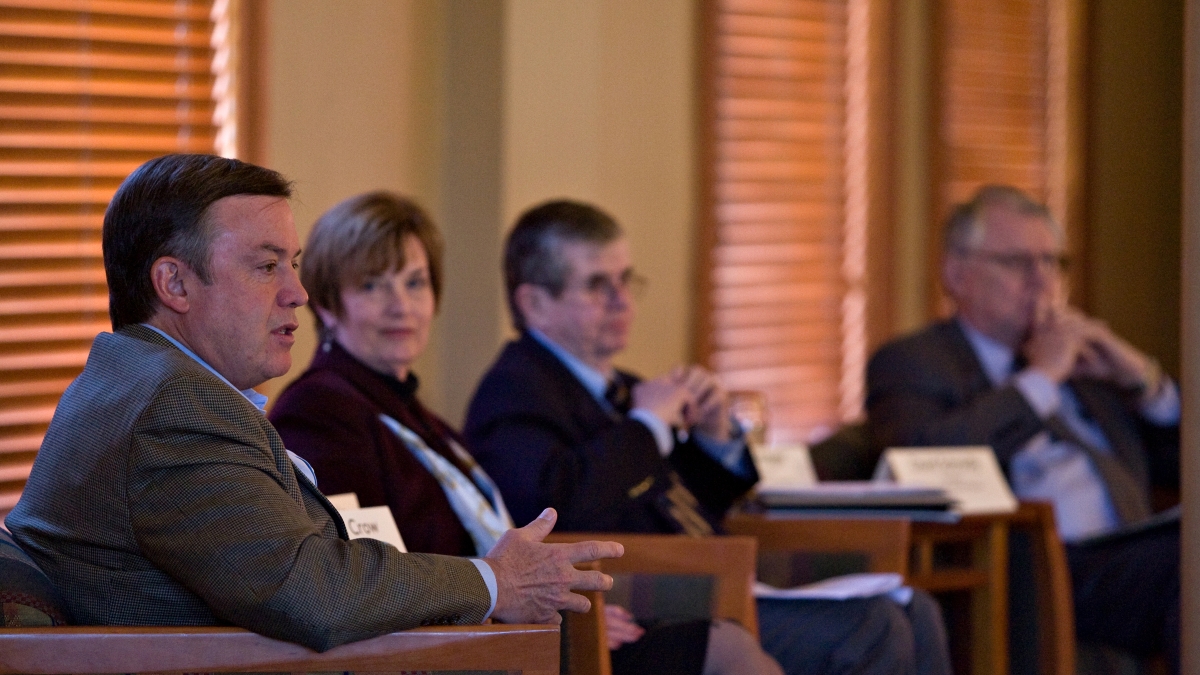Higher ed presidents say teaching sustainability is good business

Achieving carbon neutrality on American college and university campuses is not a matter for science alone. It has to be taught. And, in dealing with budget reductions coupled with enrollment growth, college and university presidents have learned that sustainability is also a good business model.
“We’ve all faced one big dilemma in the past few years,” said David Schmidly, president of the University of New Mexico, noting that UNM experienced budget cuts of about 20-22 percent, while at the same time enrollment increases of 15 percent.
“What we found is sustainability can be useful for teaching not only a paradigm to be a better citizen; we have found that sustainability is good business. It’s a good way to contain cost and save money," he said, adding that UNM's energy conservation program saved more than $8 million over just a few years.
Schmidly made his remarks at Arizona State University during the recent Southwest Regional Collaborative Symposium of the American College and University Presidents’ Climate Commitment (ACUPCC). Nearly 675 American colleges and universities are signatories to a commitment to reduce and eventually neutralize carbon dioxide emissions on their campuses that contribute to global warming as they integrate sustainability into their curriculum.
Schmidly was part of a presidents’ panel at the symposium that focused on how higher education in the Southwest can lead the way to a clean, green and sustainable economy. Other panelists included ASU President Michael Crow; John D. Haeger, president of Northern Arizona University; and Jan Gehler, president of Scottsdale Community College.
“I am a teacher. That’s what I do,” said Crow. Teachers create knowledge, synthesize knowledge and advance knowledge, he said. “But I think more important than that the institutions themselves have to teach.”
Crow explained that Arizona State University became one of the founding members of ACUPCC because it became clear to him after listening to “rancorous political debate” in which “we see people denigrating science” that American colleges and universities had to be involved “not only by what we teach but by what we do.”
He asked: “Is there a way to restructure our own ways in which we consume or use energy, or produce carbon, or don’t produce carbon? And, can we find a way to teach on multiple levels? Can we express it to the institution, in addition to expressing to our students?
“If teachers can’t figure that out, who can? If it is left only to scientists, that’s insufficient. Science is not enough. It has to be taught,” Crow said.
At Scottsdale Community College, part of the 250,000-student Maricopa County Community College District, “sustainability is not just left to the sustainability coordinator,” said President Gehler.
“Whether president, vice president or member of the faculty, we must model the way,” Gehler said. “I think the biggest challenge is the lack of time we have to devote to what appears to be a unique agenda. But it is not this or this, but this and this.”
The challenge for college and university presidents is to make sustainability “an integrative process, where we understand and articulate broadly and often,” she said.
At Northern Arizona University, students “are into these ideas in a big way,” said President Haeger, explaining there is a network on campus that is driving an active agenda, and that one of the things he can do as a leader is “to get out of the way.”
Infusing a sustainability emphasis into the administrative structure – whether it is building green buildings or buying fuel efficient cars – is another way presidents can lead in creating a sustainable economy, Haeger said.
“I think sustainability is a responsibility of teachers to teach,” said UNM’s Schmidly. “It is also the responsibility of the university campus to practice it and be an example that students and people beyond the campus can see as a real world example of how to operate sustainably.”